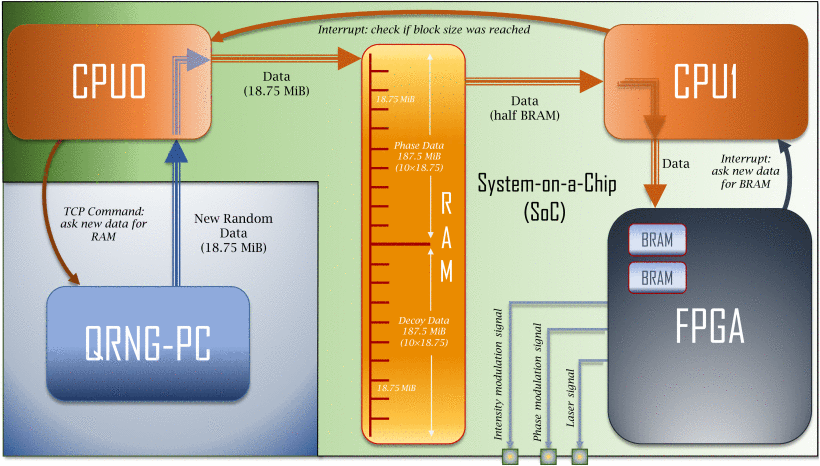
A. Stanco1, F. B. L. Santagiustina1, L. Calderaro1, M. Avesani1, T. Bertapelle1, D. Dequal1, G. Vallone1, and P. Villoresi1
IEEE Transactions on Quantum Engineering, vol. 3 (2022)
DOI: 10.1109/TQE.2022.3143997
1Department of Information Engineering, University of Padova, via Gradenigo 6/B, 35131 Padova, Italy
This article presents a hardware and software architecture, which can be used in those systems that implement practical quantum key distribution (QKD) and quantum random-number generation (QRNG) schemes. This architecture fully exploits the capability of a System on a Chip (SoC), which comprehends both a field-programmable gate array (FPGA) and a dual-core CPU unit. By assigning the time-related tasks to the FPGA and the management to the CPU, we built a flexible system with optimized resource sharing on a commercial off-the-shelf (COTS) evaluation board, which includes an SoC. Furthermore, by changing the dataflow direction, the versatile system architecture can be exploited as a QKD transmitter, QKD receiver, and QRNG control-acquiring unit. Finally, we exploited the dual-core functionality and realized a concurrent stream device to implement a practical QKD transmitter, where one core continuously receives fresh data at a sustained rate from an external QRNG source, while the other operates with the FPGA to drive the qubit transmission to the QKD receiver. The system was successfully tested on a long-term run proving its stability and security. This demonstration paves the way toward a more secure QKD implementation, with fully unconditional security as the QKD states are entirely generated by a true random process and not by deterministic expansion algorithms. Eventually, this enables the realization of a standalone quantum transmitter, including both the random numbers and the qubit generation.
